Last updated: July 20, 2023
Article
Testing Treatments for Mitigating Climate-Change Effects on Adobe Structures in the National Parks
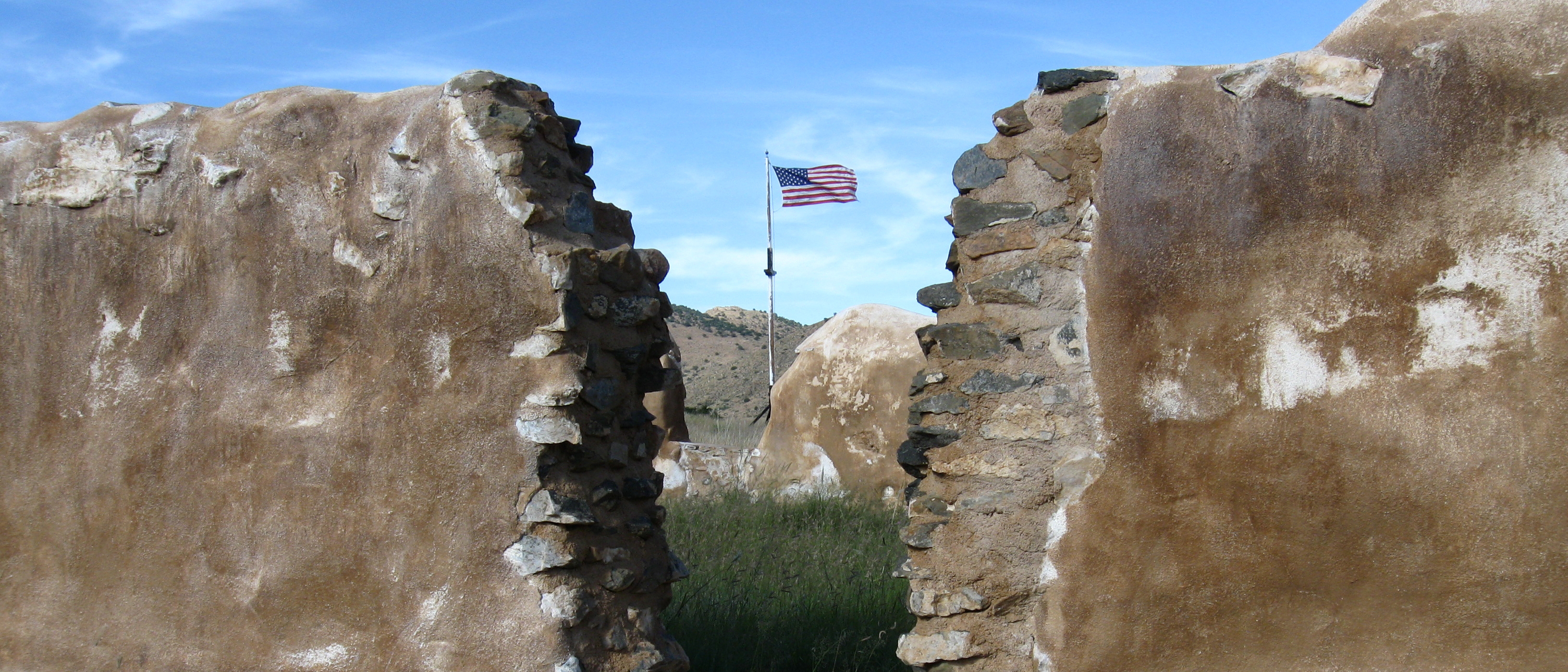
Cavalry barracks, Fort Bowie National Historic Site.
Background
In Summary
- In the US Southwest, rainstorms of increasing intensity are amplifying erosion threats to historic adobe structures.
- Using adobe test walls and rainshower simulators, researchers evaluated the effectiveness of unamended earthen treatments (patches, caps, and encapsulation coats) to protect against rainshowers of 100-year intensity.
- Unamended encapsulation coats and caps provided significantly greater protection than patching.
- Information like this will allow managers to tailor preservation methods and better protect culturally valuable resources.
In Southwestern national parks, cultural heritage sites made of adobe materials have lasted hundreds of years in arid/semi-arid environments. But climate change is making it harder to preserve these cultural resources for future generations. Across multiple models, temperature is reliably expected to increase. Precipitation models show far more variability in this region, but rainfall intensity is also expected to increase—and with it, the threat of erosion to adobe structures. To preserve these sites for the long term, resource managers need two things: knowledge of what future climate-change impacts are likely to be, and effective conservation practices to mitigate them.
In a study at the Desert Research Learning Center in 2018, researchers built adobe walls and subjected them to simulated rainshowers of different intensities. That study found that that increasing rainfall intensity will cause increased rates of erosion in unprotected adobe block construction. A single 30-minute simulated storm of 100-year intensity (10.6 cmh−1) caused a mean 5.64% loss of wall material, and affected a mean area of 8,790 cm2 of wall surface.
In this follow-up study, we wanted to learn which—if any—unamended earthen treatments might help preserve adobe under rainfall intensification. To address this goal, we (1) randomly applied patch, cap, and encapsulation/shelter coats to individual adobe test walls, (2) applied a 30-minute simulated rainshower of local 100-year intensity to each wall, and (3) used terrestrial laser scanning to quantify the wall deterioration.
Our findings indicated that patching alone will not prevent substantial damage, but unamended encapsulation coats and caps provide significantly greater protection than patching. Using this model will allow National Park Service (NPS) resource managers to tailor preservation methods for a positive return on investment in material and labor costs, resulting in better retention of culturally valuable resources.
Materials and Methods
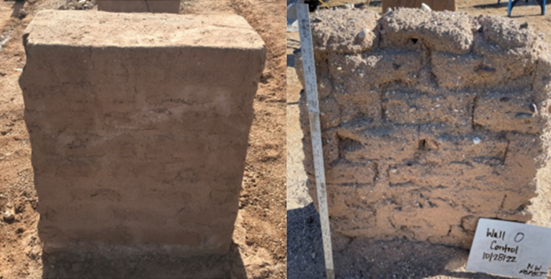
Figure 1. Wall O when newly constructed in 2018 (left) and before rain simulation in 2022 (right).
This follow-up study used the same test walls from the 2018 intensity study. After the intensity experiments, the walls received no preservation treatments or amendments. They have experienced variable amounts of erosion in response to both ambient weather and the applied rainfall events. By autumn 2022, they visually appeared as “melted adobe ruins” (Figure 1).
In October 2022, we applied one of three treatments to five walls each. Walls were randomly assigned to treatments1, in the following configurations:
- Control: No unamended earthen material were added.
- Patch: Earthen material was used to fill in voids and cracks. Cobbling/rajuelas were applied in some cases.
- Cap: Earthen material in a wet-plaster consistency was applied over the tops of the walls and vertically down the four faces of the walls to 10 centimeters. Depth/thickness of plaster did not exceed 1.25 centimeters, excluding locations where patching was performed. Patching was performed prior to capping.
- Encapsulate (encapsulation/shelter coat): Earthen material in a plaster consistency was applied to the entire wall surface (i.e., a cap plus coating the walls to the ground surface). Depth/thickness did not exceed 1.25 centimeters, excluding locations where patching was performed. Patching was performed prior to encapsulation.
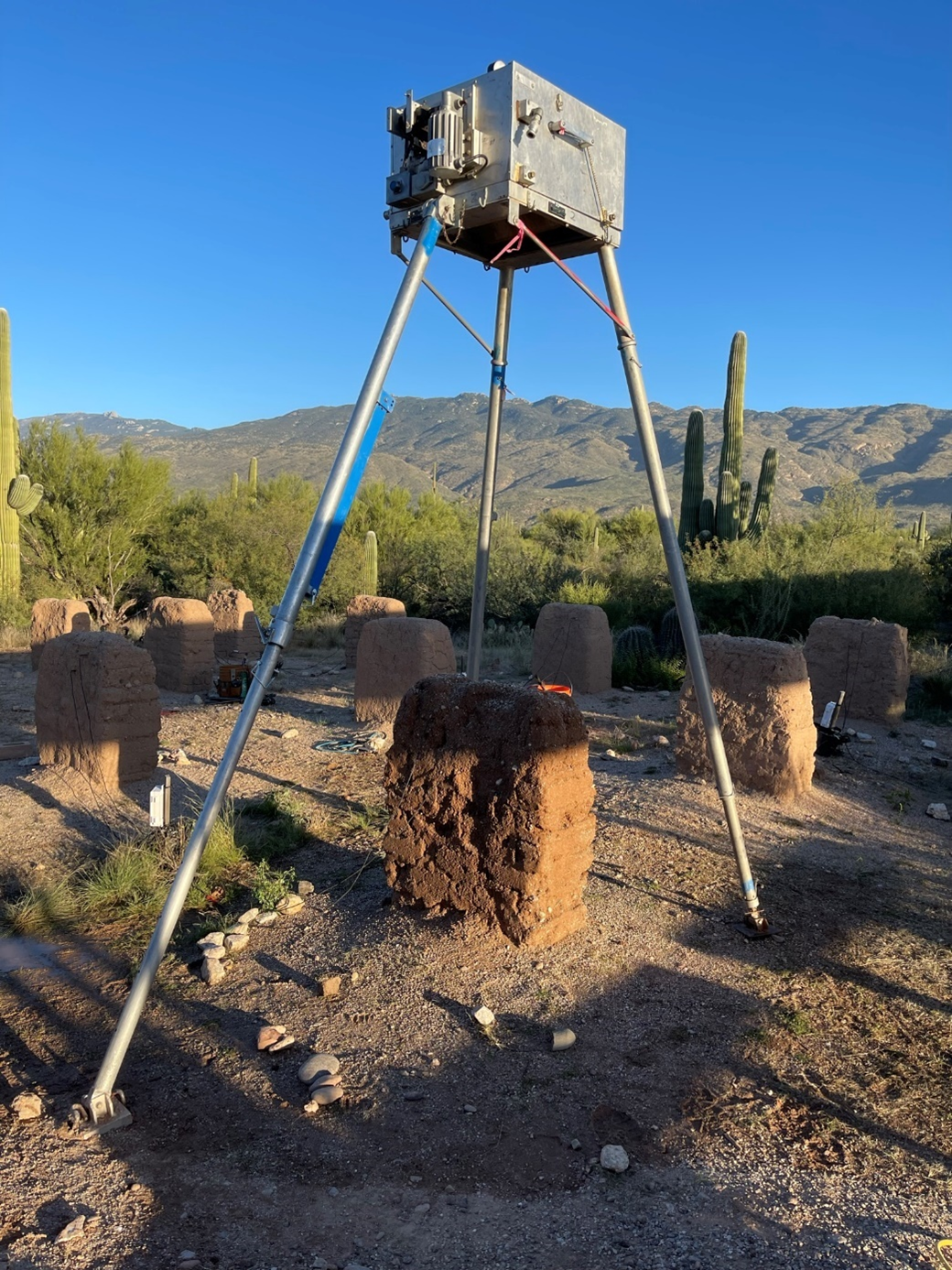 Figure 2. Rainfall simulator, October 2022. When in use, tarps surround the test wall.
Figure 2. Rainfall simulator, October 2022. When in use, tarps surround the test wall.Each treatment used unamended earthen material, defined as having no chemical additives such as polymer adhesives to help with water shedding. The treatments consisted of the same locally sourced soil with clay content and sand as the walls themselves. The walls were LiDAR-scanned directly before and after treatment.
After the treatments were applied, rainfall simulations were conducted using the same rainfall simulator used for the 2018 study (Figure 2). We simulated the storms from October 25 to November 1, on days with consistent daily ambient weather conditions and no natural rainfall. We then scanned the test walls a third time, on November 3. After the final scan, we computed a linear model by treatment (i.e., control, patch, cap, and encapsulate) for four metrics:
- loss of original and treatment material,
- surface area receded past original material,
- material loss of original fabric, and
- maximum deviation from original material.
Results
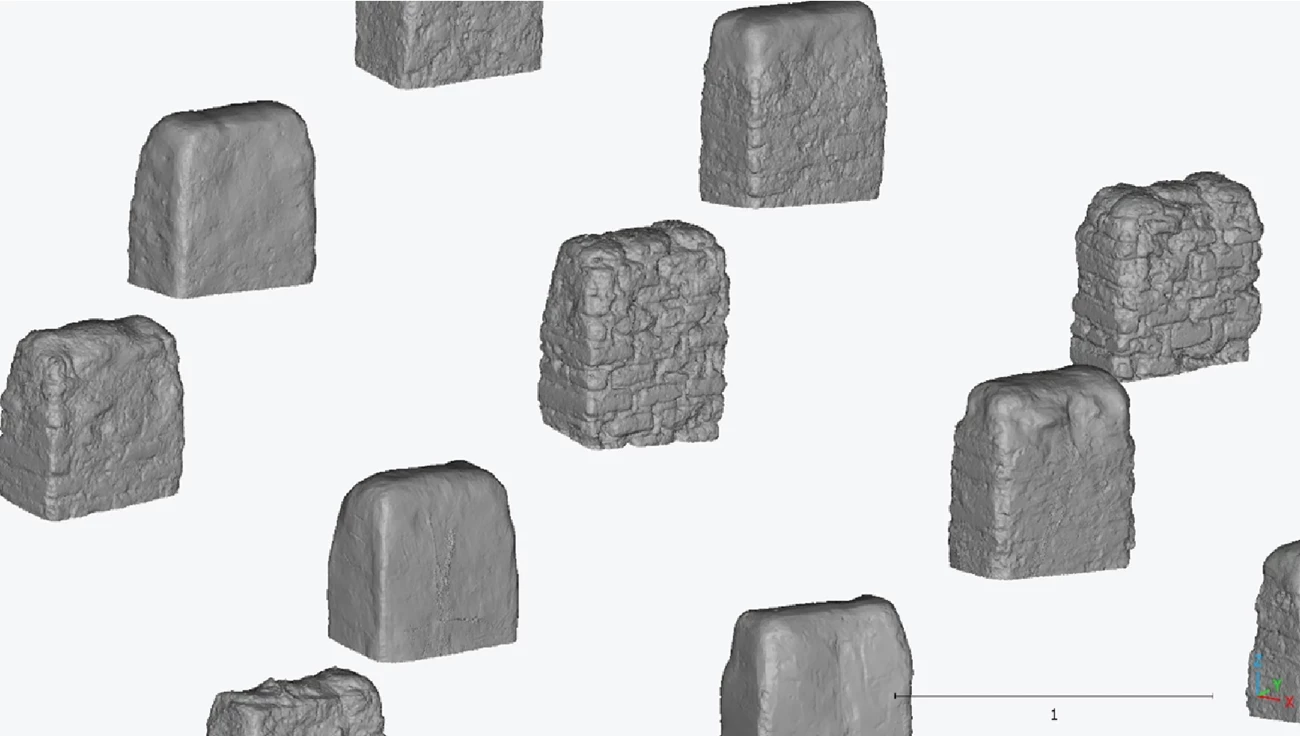
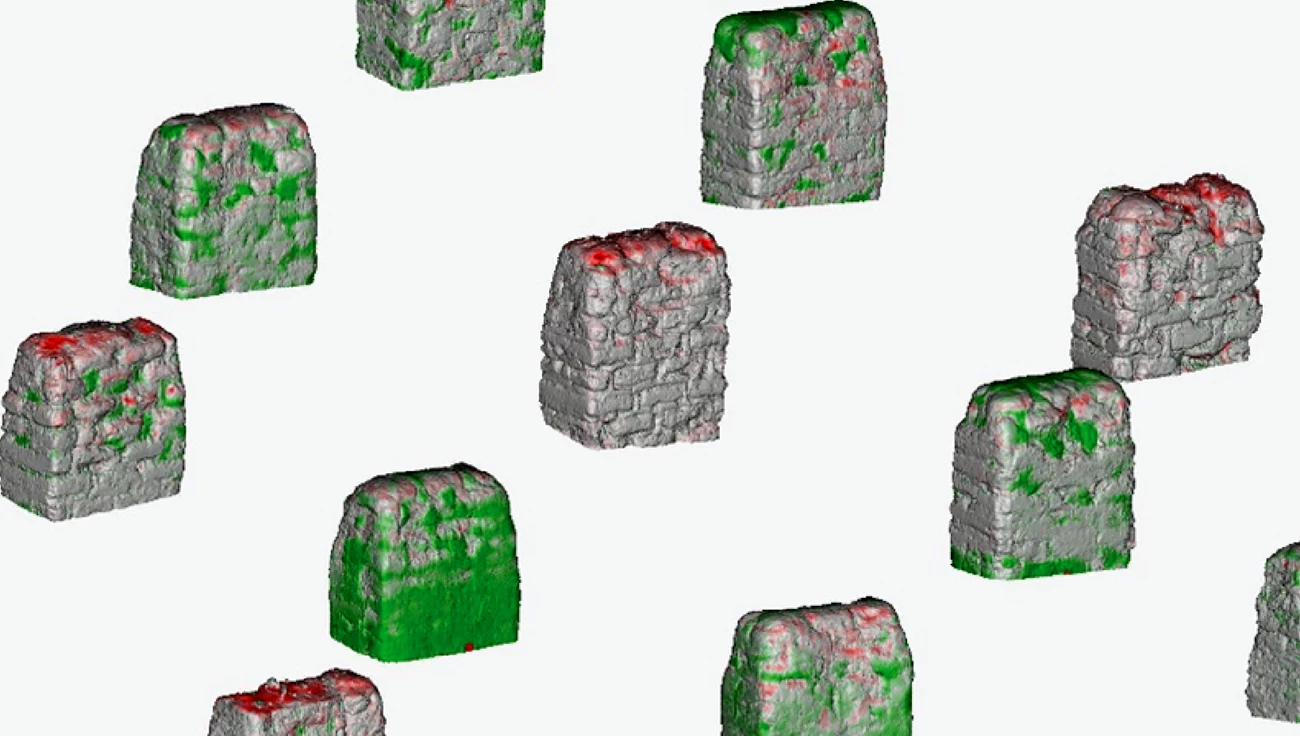
Left image
LiDAR scan of test walls after treatments were applied, but before simulated rainshower (Scan 2).
Right image
LiDAR scan of treated test walls following the simulated rainshower (Scan 3). Green shows material added to the original walls, primarily through the treatment application. Red shows where erosion from the rainshower reached the original wall material.
The simulated rain event caused the patch, cap, and encapsulate treatments to lose a mean of 3.37–3.75% of their total volume, including the original fabric and added treatment material (Table 2). Significantly less material eroded away in the control treatment (mean 0.77% of total volume)—but this loss was entirely comprised of original fabric.
Table 2. Wall treatments and erosion metrics.
| Treatment | Wall | Material loss of original fabric (cm3) | Affected surface area of original material (%) (cm2) |
|---|---|---|---|
| Encapsulate | E | 286 | 2.56 (487) |
| Cap | L | 328 | 3.04 (677) |
| Cap | Q | 482 | 4.24 (833) |
| Encapsulate | G | 546 | 4.19 (842) |
| Encapsulate | J | 658 | 3.45 (682) |
| Patch | T | 796 | 6.00 (1,256) |
| Cap | D | 829 | 2.88 (564) |
| Cap | K | 852 | 5.00 (1,055) |
| Cap | S | 865 | 6.20 (1,412) |
| Encapsulate | N | 936 | 7.41 (1,524) |
| Encapsulate | F | 1,264 | 11.97 (2,210) |
| Patch | B | 1,416 | 13.16 (2,517) |
| Control | O | 1,653 | 12.93 (2,427) |
| Patch | H | 2,055 | 13.32 (2,814) |
| Control | M | 2,109 | 13.76 (3,250) |
| Control | P | 2,114 | 13.93 (3,177) |
| Patch | I | 2,193 | 13.52 (2,590) |
| Control | R | 2,298 | 15.84 (3,539) |
| Control | C | 2,880 | 15.85 (3,718) |
| Patch | A | 3,555 | 18.32 (3,801) |
In Table 2, the columns for material loss and affected surface area show where erosion went past the treatment material and into the original wall fabric. These metrics indicate that the cap and encapsulate treatments resulted in significantly less degradation of the original fabric than the control and patch treatments.
- The mean material loss of original fabric was 2,210 and 2,000 cm3 for the control and patch treatments, respectively.
- The cap and encapsulate treatments showed significantly less material loss on the original fabric—approximately one-third of that for the control and patch treatments.
- The simulated rain event caused recession of ≥2 millimeters to a mean 14.5% of the surface area of the pretreatment control and 12.9% of the patch walls.
- Erosion of the surface area was significantly less severe in the cap and encapsulate treatments, with a mean affected surface area of 4.27% and 5.92%, respectively.
Return on Investment
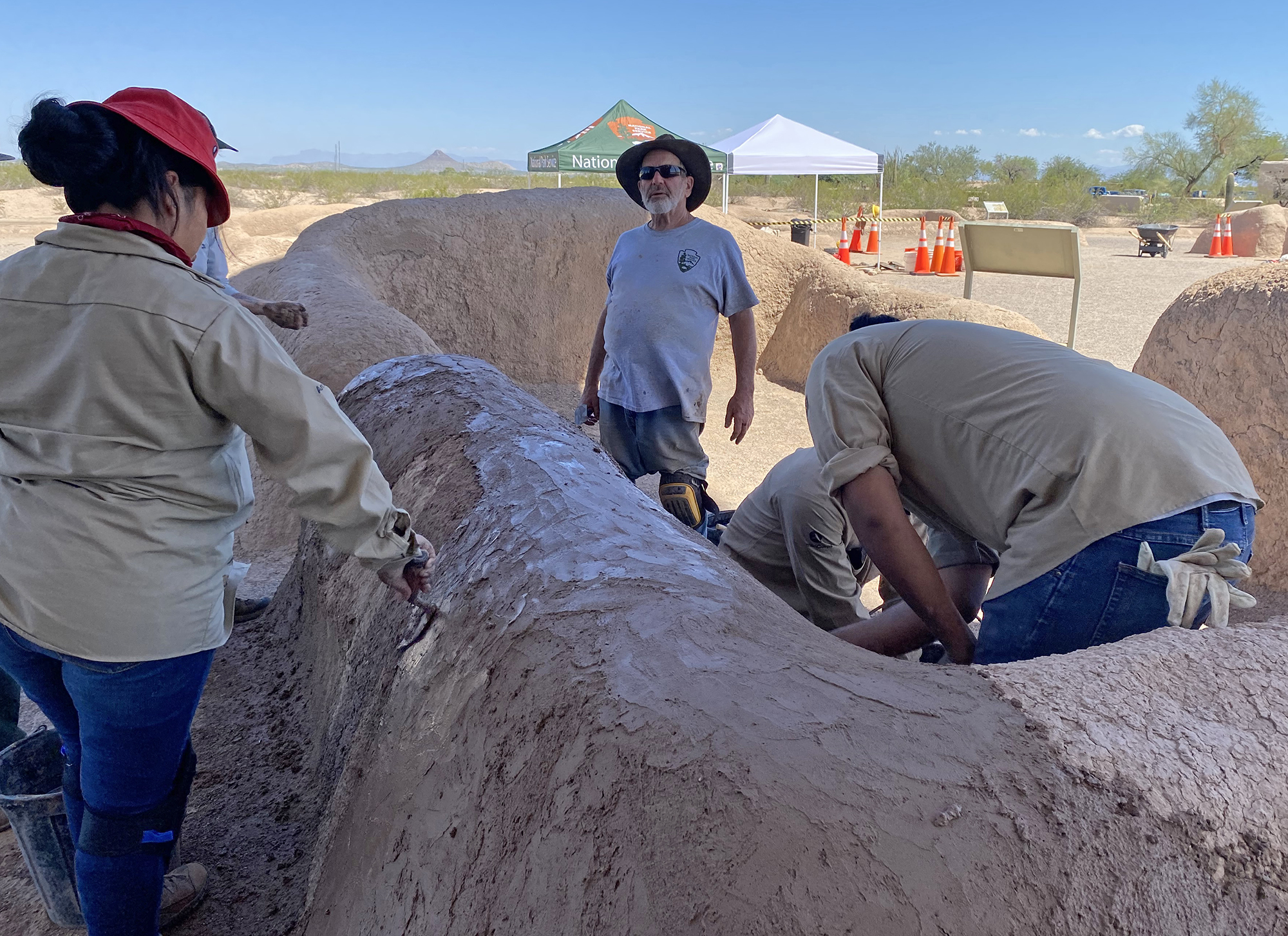 Applying an amended earthen encapsulation coat to adobe at Casa Grande Ruins National Monument.
Applying an amended earthen encapsulation coat to adobe at Casa Grande Ruins National Monument.The preservation treatments employed in this study are all designed to be sacrificial—that is, to provide a protective layer that will erode before the historic adobe underneath. The results support what historic preservationists have observed in the field—namely, that “the cap is the life of the wall.” Statistically, there was no difference between applying a cap and an encapsulation coat treatment. But there was a difference between solely patching and placing either a sacrificial cap or encapsulation coat.
This is crucial information for managers who need to maximize the return on investment (ROI) of their limited resources. In a general sense, it is easy to evaluate the staff time and materials needed for each of the three treatments. Patching requires the least investment; full encapsulation requires the most, with capping in the middle. But this model also provides park managers with data for deciding when and where to focus staff energy and funding. For example, if a park has full-time preservationists on staff, our models show that re-capping or re-encapsulating multiple times within a year may be a positive ROI. But a site without full-time practitioners will likely need to look for other treatment options (e.g., amended earthen coats) to extend their cyclic preservation maintenance.
Armoring: An Unexpected Finding
Comparing the results of this study to those of the 2018 study suggests the test walls became more erosion-resistant after weathering. In 2018, a group of the newly constructed bare adobe walls received a 30-minute simulated rainshower of the same intensity as in the current study (10.6 cmh−1). The control walls in the present study had been exposed to four years of ambient weather, followed by simulated rain events. Compared to the new walls that received the same simulated rainfall event in 2018, the erosion results were substantially better for these weathered walls. The mean material loss on the new walls was over eight times that of the weathered walls, and the mean affected surface area of the new walls was twice as much as that of the weathered walls. This suggests the original fabric became more resistant to intense rainfall over the intervening four years.
Progressive armoring of the weathered adobe walls may account for some of the differences. When newly constructed, the walls had a smooth finish and flat top. But larger particles, including gravel and rock, reduce erosion. After simulated and ambient rain events, wind erosion, and abrasion from periodic tarping, the surface texture and shape of the walls changed drastically (see Figure 1). Fine particles were transported away, leaving the larger sand and gravel particles. The tops became more convex, and the mortar eroded faster than the bricks. Protruding sand and gravel can absorb the impact of raindrops and slow runoff, reducing erosion. A convex top prevents water from pooling, which may reduce concentrated pourover and rilling on wall faces. Some water routes along the incised mortar lines slowed runoff at the horizontal sections.
Generally, these results support the observation that the condition of the top of a wall is a key determinant to its preservation, and even a natural armored adobe wall can provide some protection. But while the weathered walls lost a fraction of the original fabric compared to the new walls under the same storm conditions (1,730 cm3 and 14,400 cm3, respectively), that smaller loss still constitutes a conservation issue necessitating treatment.
Conclusions
Neither the cap nor the encapsulation treatments “saved” the walls from increasing rainfall intensity. There were still measurable impacts to the original fabric after only a 30-minute storm at the 100-year intensity. However, capping walls with unamended earthen material will provide some protection in light of increasing storm intensity. Capping requires less time and material than applying an encapsulation coat.
But to ensure effective preservation, the application cycles for unamended earthen caps would need to be far shorter than they currently are at many NPS sites. As such, we intend to use these same models to test different additives to earthen material and other sacrificial coat options. Also, due to the unexpected differences in the erosion rates of new versus weathered walls, further study is needed to investigate soil armoring to maximize the return on investment in preserving these nationally important heritage sites.
This article was summarized from Hart, S., K. Raymond, C.J. Williams, W.A. Rutherford, and J. DeGayner, Modeling Earthen Treatments for Climate Change Effects. Heritage 2023, 6, 4214–4226. https://doi.org/10.3390/heritage6050222.
Notes
1A one-way analysis of variance (ANOVA) found that the walls in each of the treatment groups were not significantly different from each other relative to their total volume loss (p = 0.79) and affected surface area (p = 0.95) from the earlier study and subsequent ambient climate exposure.
Recommended Reading
NPS Cultural Resources Climate Change Strategy
Climate-Change Impacts on NPS Cultural Resources
Cultural Resources and Climate Change
Measuring the Effects of Rainstorm Intensity on Adobe Walls in the National Parks
Tags
- aztec ruins national monument
- bandelier national monument
- canyon de chelly national monument
- casa grande ruins national monument
- chaco culture national historical park
- chiricahua national monument
- coronado national memorial
- death valley national park
- el malpais national monument
- el morro national monument
- fort bowie national historic site
- fort davis national historic site
- fort union national monument
- hubbell trading post national historic site
- joshua tree national park
- manzanar national historic site
- mojave national preserve
- montezuma castle national monument
- organ pipe cactus national monument
- pecos national historical park
- saguaro national park
- salinas pueblo missions national monument
- tumacácori national historical park
- climate change
- adobe
- historic preservation
- desert research learning center
- sonoran desert network
- inventory and monitoring division
- archeology
- lidar
- science
- climate science
- cultural resource protection
- cultural resource management
- climate change adaptation
- research
- cultural resource
- cultural resources
- climate change impacts
- climate change effects
- archaeology
- new mexico
